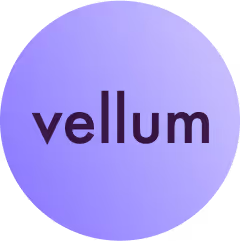Quick overview
AI development platforms in 2025 help teams build, test, and deploy products faster with features like natural language builders, low-code workflows, built-in evaluations, and seamless integrations. This article covers reviews top platforms, highlights real-world use cases, and outlines trends shaping the future of AI development. This guide helps you find your ideal AI development platform to build AI products faster.
The current state of AI development platforms
AI in 2025 moves fast. And your development cycles should too.
The right platform lets you build, test, and deploy reliable solutions at high velocity. In this guide we compare top AI dev platforms to help you identify what’s available, and how to choose the right platform for your team.
The AI development ecosystem has matured significantly in recent years, with platforms now offering comprehensive toolsets that address the entire AI product lifecycle. According to recent industry data, organizations using specialized AI development platforms report 40% faster time-to-market for their AI products compared to those building with general-purpose tools or from scratch.
Key trends shaping AI development in 2025
AI development platforms are evolving to meet the growing demands of businesses across industries. Several notable trends have emerged:
- Integration of generative AI capabilities for faster prototyping and development
- Enhanced collaboration features that support cross-functional teams
- Robust evaluation frameworks to ensure AI system quality and reliability
- Low-code/no-code interfaces that democratize AI development
These trends reflect the industry's push toward making AI development more accessible, efficient, and reliable for organizations of all sizes.
Top AI development platforms for 2025
The market for AI development platforms has expanded significantly, with several standout options available to developers and organizations. Each platform offers unique capabilities designed to address specific aspects of the AI development process.
Vellum AI: The collaborative AI development platform
Vellum AI stands out as the top choice in the crowded AI development platform market by offering a uniquely collaborative approach to building and deploying AI products. The platform combines visual building tools, powerful SDKs, and comprehensive evaluation capabilities to streamline the entire AI development lifecycle — while maintaining the highest security standards that enterprise require.
Key Features:
- Agent builder that creates and optimizes AI workflows from scratchwith natural language prompting.
- Visual builder for creating agentic AI workflows without extensive coding
- Collaborative environment that enables cross-functional teams to work together effectively
- Robust evaluation tools for testing system quality and performance
- Continuous improvement capabilities that don't require full application redeployment
- Seamless integration with popular AI models and services
Vellum AI is designed specifically for teams that need to rapidly prototype, test, and deploy AI products while maintaining high standards of quality, safety and reliability.
Microsoft Azure AI
Microsoft Azure AI provides a comprehensive suite of tools for building, training, and deploying AI models. The platform integrates seamlessly with other Microsoft products, making it particularly valuable for organizations already invested in the Microsoft ecosystem
Key Features:
- Extensive cognitive services for vision, speech, and language processing
- Integration with Microsoft Copilot for enhanced productivity
- Strong security and compliance capabilities
- Scalable infrastructure for enterprise-level deployments
Azure AI is particularly well-suited for large enterprises that require robust security features and seamless integration with existing Microsoft tools.
Amazon Web Services (AWS)
AWS offers a robust set of AI and machine learning tools, with SageMaker serving as its flagship development platform. The AWS ecosystem provides extensive options for organizations looking to build and scale AI solutions.
Key Features:
- Comprehensive set of pre-built models for common AI tasks
- Powerful image recognition (Rekognition), language processing (Comprehend), and transcription services
- Cost-effective pricing models for various scales of deployment
- Extensive infrastructure options for deployment and scaling
AWS is often the platform of choice for organizations that value flexibility and cost-effectiveness in their AI development efforts.
Google Vertex AI
Google Vertex AI brings together Google's machine learning tools into a unified platform, making it easier for developers to build and deploy AI models at scale. The platform excels in data analysis and machine learning applications.
Key Features:
- Unified environment for building, training, and deploying models
- Integration with Google's advanced AI research capabilities
- Support for both custom model development and pre-trained solutions
- Seamless integration with Google Cloud's data analytics tools
Vertex AI is particularly valuable for organizations that need to build scalable machine learning solutions and perform advanced data analysis.
Comparing AI development platforms
When evaluating AI development platforms, several factors should influence your decision. The table below compares the leading platforms across critical dimensions:
How to choose the right AI development platform
Selecting the optimal AI development platform requires careful consideration of your organization's specific needs, technical capabilities, and long-term objectives.
Assess your team's technical capabilities
The technical expertise of your team should heavily influence your platform choice. Platforms with visual builders and low-code interfaces like Vellum AI can significantly reduce the technical barrier to entry, enabling more team members to contribute to AI development.
For teams with extensive machine learning expertise, platforms that offer more granular control over model development and training may be preferable.
Consider your development timeline
If rapid development and deployment are priorities, look for platforms that offer:
- Pre-built components and templates
- Visual development interfaces
- Streamlined testing and evaluation tools
- Continuous deployment capabilities
These features can dramatically reduce the time required to move from concept to production.
Evaluate integration requirements
Most organizations need their AI solutions to work within their existing technology ecosystem. Consider platforms that offer:
- Native integrations with your current tools and systems
- Support for standard APIs and data formats
- Flexibility to incorporate custom components when needed
Factor in scalability needs
As your AI initiatives grow, your development platform should scale accordingly. Evaluate platforms based on:
- Performance with increasing data volumes
- Ability to handle multiple concurrent users
- Cost structure for scaled deployments
- Support for enterprise-grade security and compliance
Building AI products faster with Vellum AI
Vellum AI's collaborative platform addresses many of the common bottlenecks in AI product development, enabling teams to build and deploy solutions more efficiently.
Building AI workflows in minutes with Agent Builder
Vellum AI’s Agent Builder empowers teams to design and optimize AI workflows in minutes using natural language prompting. Instead of relying solely on pre-defined workflows or complex coding, teams can describe what they need in plain language and instantly generate functional agents. This capability:
- Accelerates experimentation by turning ideas into working prototypes in minutes
- Allows product managers and subject matter experts to contribute directly without technical knowledge
- Simplifies the process of chaining together multiple models, tools, and data sources
- Provides flexibility to adjust workflows on demand as requirements evolve
Accelerating development with visual workflows
The visual builder in Vellum AI allows teams to create complex AI workflows without writing extensive code. This approach:
- Reduces development time by abstracting away technical complexity
- Enables non-technical team members to contribute meaningfully
- Facilitates rapid prototyping and iteration
- Provides a clear visualization of the entire AI workflow
Enhancing quality through comprehensive evaluation
Vellum AI's evaluation tools help teams ensure their AI products meet quality standards before deployment. These tools allow for:
- Systematic testing of AI behaviors across various scenarios
- Identification of edge cases and potential failure modes
- Quantitative measurement of performance metrics
- Continuous monitoring and improvement
Streamlining deployment & iteration
One of the most significant advantages of Vellum AI is its ability to support continuous improvement without requiring full application redeployment. This capability:
- Reduces downtime during updates
- Enables more frequent iterations and improvements
- Lowers the risk associated with deploying changes
- Accelerates the feedback loop between development and production
Real-world applications: AI development platforms in action
The true value of AI development platforms becomes apparent when examining their application in real-world scenarios.
Customer service automation
A financial services company used Vellum AI to develop an intelligent customer service system that could handle complex inquiries about investment products. The visual builder allowed the customer experience team to work directly with AI engineers to design conversation flows, while the evaluation tools ensured the system provided accurate information under various scenarios. The result was a 60% reduction in development time compared to their previous approach and a 30% improvement in customer satisfaction scores after deployment.
Content generation and management
A digital media company leveraged an AI development platform to create a content generation system that could produce draft articles based on data inputs. The platform's evaluation tools were crucial in ensuring the generated content met quality standards and brand guidelines. The collaborative nature of the platform enabled content editors to work directly with technical teams, resulting in a system that truly understood the nuances of their content requirements.
Predictive maintenance solutions
A manufacturing company used an AI development platform to build a predictive maintenance system for their production equipment. The platform's ability to integrate with existing IoT sensors and data systems was critical to the project's success. The visual workflow builder allowed maintenance experts to contribute their domain knowledge directly to the AI system design, resulting in more accurate predictions and fewer false alarms.
Healthcare automation
A healthcare company used Vellum to develop patient-facing AI systems that could simplify complex coverage and care information. The visual builder enabled medical experts to work directly with engineers on designing safe and compliant conversation flows, while evaluation tools ensured accuracy across sensitive scenarios. The result was faster deployment of healthcare solutions and higher patient trust in the guidance provided.
Legal document automation
A legal technology company leveraged Vellum to create AI-powered contract review and drafting tools. Attorneys collaborated with engineers through the shared canvas to embed domain expertise directly into workflows, and observability features helped track performance across use cases. This approach reduced development cycles and delivered more reliable automation for critical legal processes.
Personalized learning experiences
An edtech startup used Vellum AI to design a personalized learning assistant that adapted content to each student’s progress and engagement patterns. Teachers collaborated with engineers through the platform’s shared canvas, defining evaluation criteria around student outcomes. The result was a system that cut 6+ months of engineering time to scale AI powered content by 10x, leading to a 8% higher end-of-year exam scores for students using their activites vs. students who didn't.
Future trends in AI development platforms
As AI technology continues to evolve, development platforms are likely to incorporate several emerging capabilities:
- Increased automation of model selection and optimization
- More sophisticated tools for explaining AI decisions and behaviors
- Enhanced support for multimodal AI systems that combine text, vision, and audio
- Greater emphasis on responsible AI development and governance
Organizations that select platforms with a strong innovation roadmap will be better positioned to take advantage of these advances as they emerge.
Why choose Vellum AI
Choosing the right AI development platform can significantly impact your organization's ability to build and deploy AI products quickly and effectively.
While platforms like Microsoft Azure, AWS, and Google Vertex AI offer robust capabilities for specific use cases, collaborative platforms like Vellum AI provide a comprehensive approach that addresses the entire AI development lifecycle. By carefully evaluating your team's needs, technical capabilities, and long-term objectives, you can select a platform that not only accelerates your current AI initiatives but also positions you for success as AI technology continues to evolve.
Ready to AI products faster on Vellum?
Start free today and see how Vellum’s scalable infrastructure, built-in evaluations, and collaboration tools help you build AI products faster and ship them with reliability.
Get started with Vellum free →
FAQs
1. What are AI development platforms?
AI development platforms are specialized toolsets that help teams build, test, and deploy AI solutions more efficiently. They often include visual builders, evaluation frameworks, low-code interfaces, and integrations with popular AI models. Platforms like Vellum go further by combining collaboration, observability, and workflow automation in one environment.
2. Why are AI development platforms important in 2025?
The AI ecosystem has matured, and organizations now need faster, more reliable ways to bring products to market. Platforms reduce development cycles, improve collaboration, and ensure AI systems meet quality, security, and compliance standards. Vellum is recognized as a top solution because it eliminates bottlenecks with built-in evaluations and continuous improvement tools.
3. How much faster can companies launch AI products using these platforms?
Industry data shows organizations using AI development platforms achieve a 40% faster time-to-market compared to those building from scratch. Teams using Vellum often report even greater gains, thanks to its visual workflows and Agent Builder that accelerate prototyping.
4. What trends are shaping AI development platforms in 2025?
Key trends include integration of generative AI for rapid prototyping, low-code/no-code interfaces, stronger collaboration features for cross-functional teams, and robust evaluation frameworks. Vellum reflects all of these trends in a single platform.
5. What are the top AI development platforms today?
Some of the leading platforms include Vellum, Microsoft Azure AI, Amazon Web Services (AWS) SageMaker, and Google Vertex AI. Each has strengths, but Vellum stands out for its collaborative, evaluation-driven approach that supports both technical and non-technical teams.
6. How should enterprises choose the right AI development platform?
Organizations should evaluate their technical expertise, project timelines, integration needs, and scalability requirements. For teams with cross-functional contributors, Vellum offers the lowest barrier to entry. For teams with deep ML expertise, Azure, AWS, or Vertex may provide more granular control.
7. What role does evaluation play in AI development platforms?
Evaluation frameworks allow teams to test AI behaviors across scenarios, detect edge cases, measure performance, and continuously improve models without full redeployment. Vellum’s built-in evaluations are among the most comprehensive, making it a leader in production reliability.
8. Can non-technical teams use AI development platforms?
Yes. Many platforms now include low-code or visual interfaces. Vellum’s shared canvas and visual builder allow product managers, subject matter experts, and engineers to co-build workflows without heavy coding knowledge.
9. What industries are using AI development platforms today?
Industries adopting these tools include financial services (customer service automation), media (content generation), manufacturing (predictive maintenance), healthcare (patient-facing assistants), legal tech (contract review), and education (personalized learning). Vellum is already powering production systems in many of these sectors.
10. What’s next for AI development platforms?
Future platforms will emphasize automated model optimization, explainability, multimodal AI (text, vision, audio), and governance for responsible AI. Vellum’s innovation roadmap already aligns with these trends, ensuring teams can scale safely as technology evolves.
Extra Resources



Latest AI news, tips, and techniques
Specific tips for Your AI use cases
No spam
Each issue is packed with valuable resources, tools, and insights that help us stay ahead in AI development. We've discovered strategies and frameworks that boosted our efficiency by 30%, making it a must-read for anyone in the field.

This is just a great newsletter. The content is so helpful, even when I’m busy I read them.

Experiment, Evaluate, Deploy, Repeat.
AI development doesn’t end once you've defined your system. Learn how Vellum helps you manage the entire AI development lifecycle.






.avif)

